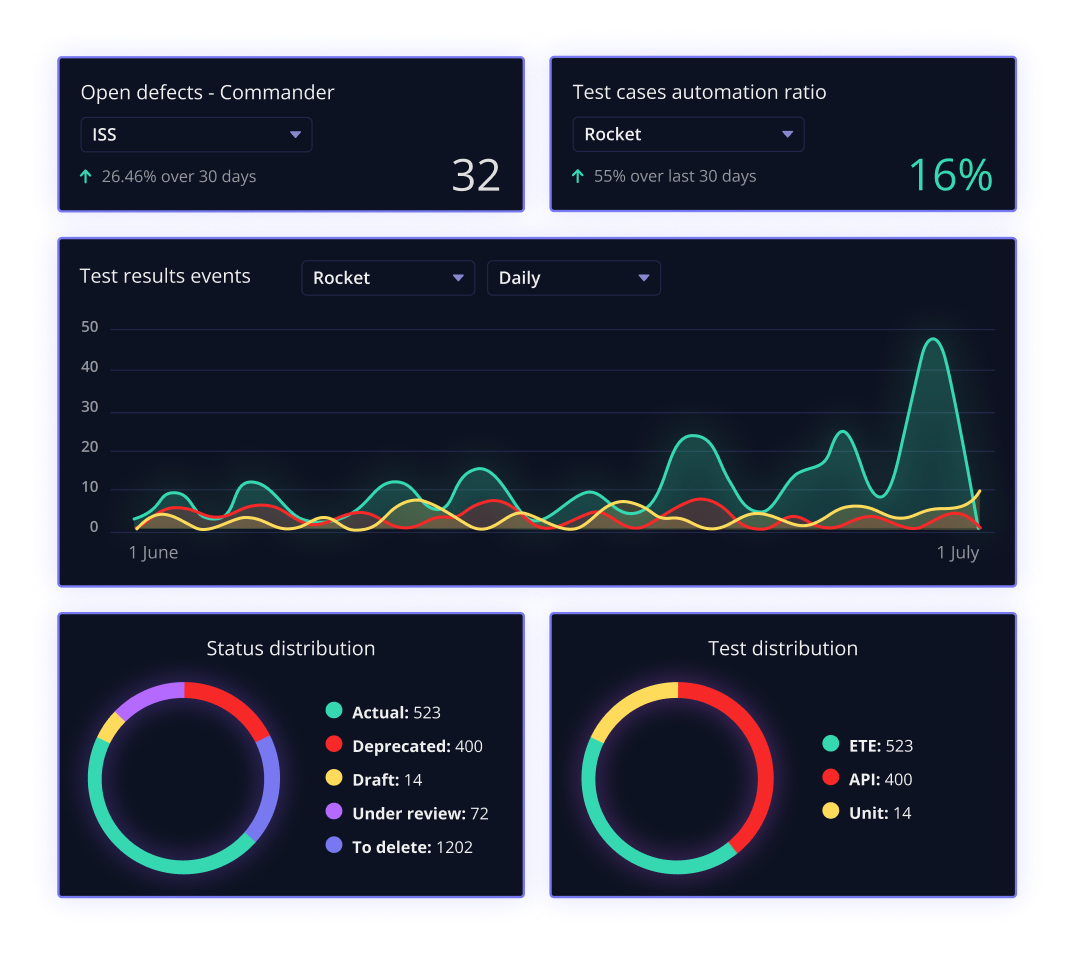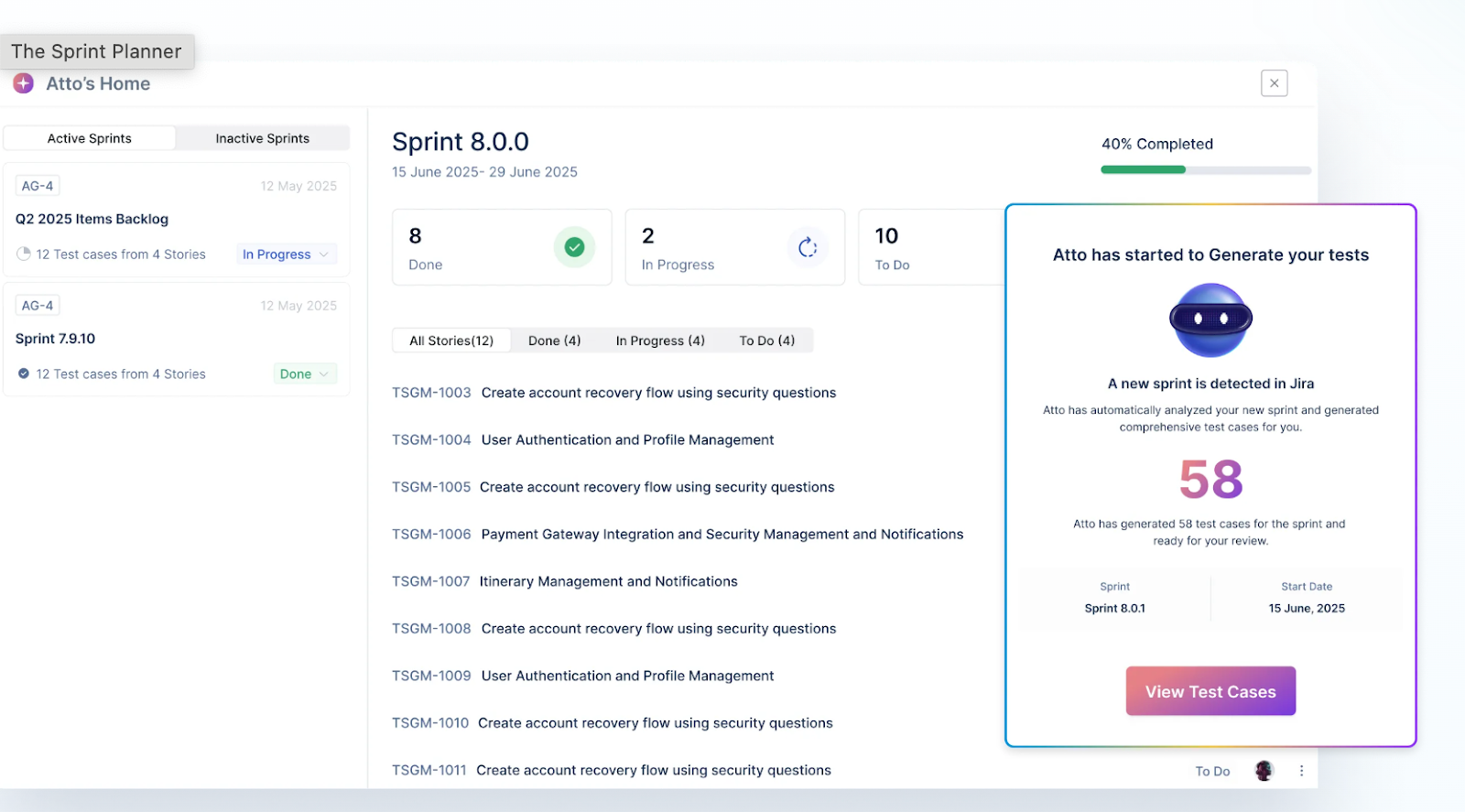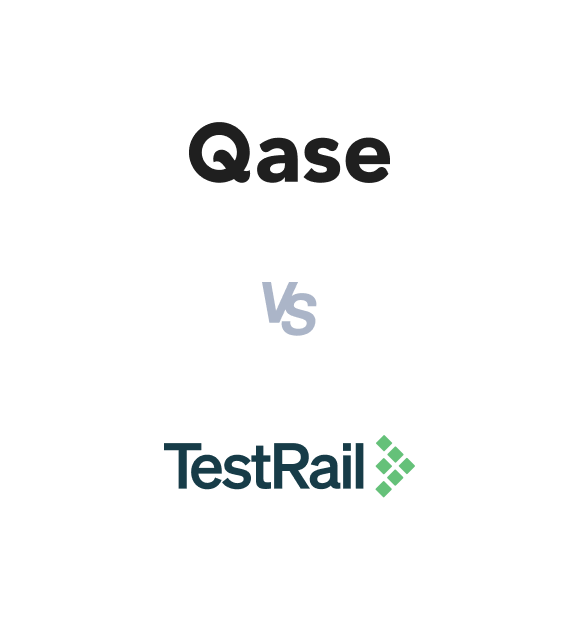Test management helps manage multiple processes involved in testing and create a single collective system. Test management tools can overlook each process and connect every single test case to every other module for better analysis and scrutiny once execution is completed. They are used by developers, testers, and often by stakeholders to get a gist of how everything is functioning at all levels. Today, its market stands at $1.1 billion and is set to reach $3.92 billion by 2032 (a 16% CAGR).
To achieve all the benefits of test management, a tester needs to select a tool that suits their requirement and matches their needs. When such a situation arises, Qase vs.Testrail is a popular comparison that testers look to. However, a thoughtful and intelligent decision can only be made if the tester is aware of these tools and can compare them with respect to the current project requirements. This post aims to establish that knowledge base and uncover the benefits and demerits of using these tools.
Table Of Contents
What is Qase?
Qase is a test management software that provides an easy-to-use interface for test execution, reporting, and analysis. Branding itself as an “All-in-one” tool, Qase is available for both manual and automation testing with a gist of artificial intelligence that enhances the testing quality as well as the application quality.

Qase screenshot showcasing its modules
For testers who wish to adopt this tool, they get many benefits along with it:
- Excellent UI: Qase provides excellent UI which is smooth and attractive. It helps engage the testers which in turn increases their productivity.
- Extremely fast: Qase claims to execute the tests 60 times faster than other tools.
- Support for automation: The platform supports both manual and automation testing. It helps centralize all types of tests into one single domain.

Screenshot of the manual testing panel on Qase
- AI-enabled: Manual tests can be converted to automated tests through artificial intelligence embedded in the tool.
- Informed analysis: Qase provides deep analytical reports after test execution with charts and graphs to help understand the results quicker. The tester can analyze the report to make further decisions.

Report analysis of test execution using Qase
- Role-based restrictions: Qase can force restrictions on certain users for performing certain actions or viewing data that may not concern them. It is a great way to collaborate without worrying about leakage or access-related issues.
Qase also ensures that their systems are always up (claiming 99.99% uptime), secure and respect the data privacy of their clients. It provides a reliable and secure environment to the testers to execute tests efficiently and in a short time.
What is TestRail?
TestRail is an extremely popular test management software that provides a centralized system with smooth scalability. TestRail aims to collaborate with different departments of the organization often working as a bridge between development, QA, and DevOps. It is a great tool for people looking to increase their test coverage, and test visibility, and perform deep analysis without compromising security.

A sample screen showcasing different modules of Testrail
TestRail comes with the following key features:
- Single screen centralization: TestRail tries to bring every detail on a single screen to provide a better view of all the metrics. This includes data from manual testing, automated testing, exploratory testing, and many more.
- Reusable and custom test cases: Reusable test cases help testers eliminate duplicate work and share the same case across different domains. It also helps in maintenance as changes in test cases will be required only in a single place. These test cases can be customized with unique test fields according to the needs.
- Planning and organizing: TestRail helps in the careful planning of the test case execution from assigning them to investigating the progress and defining the complete process as one streamlined step. Such organization of test cases helps keep a check on progress and ensures the understanding of the system is clear.
- Comprehensive reporting: TestRail provides comprehensive reporting of all the test execution (such as automation and manual) and other involved processes in detailed and attractive reports. The reports can be real-time, on-demand, or scheduled at regular intervals so that data metrics are shared frequently.

A report sample from Testrail
- Integration: TestRail comes with a wide variety of integrations that include GitLab, Jenkins, Selenium, Pytest, and Bugzilla.
TestRail comes with many other important features such as designing a personalized to-do list to keep track of the tasks, defining milestones with a due date to keep timelines in check, and multi-factor authentication to allow only authorized individuals to access the platform’s modules. Adopting all these features in our test cycles, as claimed by TestRail, can increase our efficiency and productivity by 89%.
Qase Vs TestRail – a Direct Comparison
The earlier sections of this post provide a deeper view of Qase and TestRail but as individual test management software. They introduce us to their world without comparing them with other platforms. However, when a tester has to select a test management tool for their test cycles, they cannot view these tools as individual powerhouses. They must be compared with each other to not only expose the weaknesses but also make sure that the selection they are making is the most suitable for their project, requirements, and most importantly, the team.
When it comes to the comparison of Qase vs. TestRail, we can weigh them on the following parameters:
| Parameter | Qase | TestRail |
| Uptime | 99.99% uptime with quick query support. | TestRail faces downtime frequently. |
| Suitable for | Small and medium-sized businesses. | Medium to large-sized businesses including enterprises. |
| Strength | Feasible, easy to use, and excellent integration support. | Creating a streamlined flow of complete process by bringing as many things as possible under a single roof. |
| Market share | 0.54% | 51.36% |
| User interface | Better user interface than TestRail | TestRail’s user interface is not intuitive but has a classic feel to it. |
| Ease of learning | Qase is easier to learn as the features are limited and the UI is intuitive. | Too many features cluttered in a few panels make TestRail a comparatively difficult software to learn. |
| Pricing | A free trial is available and paid plans start from $20. | No free trial is available. The base plan starts from $37. |
| User experience | A better user experience when it comes to operating the application and performing multiple actions on it. | TestRail often faces complains regarding multiple bugs on the online forums. This hinders the user experience. |
| Feature comparison | Qase has fewer features than TestRail. | TestRail comes with a long list of features that are optimized for scalability. |
| Integrations | 12 integrations but all essential ones. | 35 integrations but still lack a few essential ones. This includes Slack which is often used as a medium of communication in an organization before, during, and after test runs. |
| Customers | Rakuten, Wolt, SUSE | Adobe, Sony, Paypal |
| Preferred by | Beginners, new in the industry or testing domain. | Experts and professionals who have experience working in testing and know test management very well. |
This comparison of Qase vs. TestRail completes the window of analyzing these tools inside out. It helps us analyze whether we should opt for TestRail or Qase based on the current requirements.
When we move beyond “what they provide” to “how have they adopted”, we find that TestRail which was launched 14 years ago and was sold to IDERA has been slow in adopting the current standards. A big example of this is the lack of integration with Slack which is standard in the industry today and not inducting artificial intelligence which has an adoption rate of over 60%.
Qase on the other hand is newer but lacks the scalability and infrastructure required for enterprise-level testing. In such situations where we need scalable solutions that move ahead with the market and come with AI, we look beyond Qase and TestRail towards Testsigma TMS.
What is Test Management by Testsigma? – an Alternative to Qase and TestRail
Test Management by Testsigma is an agentic test management tool offered by the cloud-based test automation platform Testsigma. It comes with an easy-to-use interface, is cloud-based, eliminates overheads, and does not consume the system’s essential resources.
Apart from being a light-weight and fast tool, it provides many other features:
- Self-Healing Tests – Tests automatically adapt to application updates, reducing maintenance effort and minimizing test failures.
- Jira Native – A native test management tool for Jira that offers two-way Jira sync.
Here is the specialized suite of agents of Atto
- Sprint Planner Agent – Automatically starts test planning when a Jira sprint begins, keeping QA aligned with development.

- Generator Agent – Instantly creates test cases from inputs like Figma designs, Jira stories, PDFs, chat prompts, screenshots, and videos. It also uncovers edge cases to boost coverage and strengthen quality.
- Runner Agent – Executes validated test cases within the browser, ensuring fast and reliable test runs.
- Bug Reporter Agent – Detects issues, captures detailed reports with steps, and files them directly into Jira, minimizing manual effort and speeding up resolution.
Qase Vs TestRail Vs Test Management by Testsigma – Which One Should You Choose?
Whenever the question of test management software comes up, Qase vs TestRail is often the first comparison we discuss. But when we dig deep into their characteristics, we find a few anomalies that can change our decision and opt for alternatives.
Qase is a light-weight tool, launched in 2018, and comes with an intuitive user interface and excellent user experience. It is smooth and one of the easiest tools for running automation tests. However, Qase suffers from not being scalable. This means that when the application starts to grow, Qase will not be able to cope with its growth rate and will begin to break. Such events force the organization to change tools, which is a very time-consuming, and no team would want to walk down that lane.
TestRail, on the other hand, is a highly scalable tool that fits well with enterprise-level applications or medium-sized businesses. However, it is complex, challenging to learn, and a huge expense for testers. TestRail has been constantly blamed for too many bugs, especially recently. This hinders the team’s performance and will trouble the team in big projects where many software programs are used.
Test Management by Testsigma is a tool offered by Testsigma for test case management. It is highly scalable and comes with all the necessary features required for test case management. Test Management by Testsigma is also extremely easy to learn, as it has simpler modules and an organized screen panel where elements are logically separated. Unlike TestRail, it does not consume too many resources and is an excellent tool for collaboration.
Conclusion
Test management in an organization is as important as test case creation. It helps streamline the process and monitor all the activities at the lowest possible level for better optimization and figuring out the anomalies at the micro level. Qase and TestRail are established test management tools that have proven their worth in the market. They each have strengths that help accomplish many tasks quickly. However, they lack a few areas that might become a deal breaker for the team or the organization. While the choice of a test case management tool depends upon your specific project requirements and preferences, Test Management by Testsigma seems to have an upper edge in the Qase vs TestRail vs Test Management by Testsigma comparison. If not for the complete project, try it through its free trail
Frequently Asked Questions (Faqs)
Qase is easier to learn with its modern, intuitive interface. TestRail has a steeper learning curve but offers more advanced features for experienced QA teams.
TestRail provides deeper QA-focused reporting and analytics. Qase offers simpler dashboards and reports, better suited for smaller teams.
Qase: Limited enterprise scalability, fewer advanced reporting options, no AI-driven features.
TestRail: Higher cost, complex setup, and less intuitive for beginners.


